Our first stop was the oldest church in the U.S., San Miguel.
"Oldest Church structure in the U.S.A. The original adobe walls and altar were built by Tiaxcalan Indians from Mexico under the direction of Franciscan Padres. ca.1610
There appears to be a lot of Spanish influence in the design.
This bell is at the back of the church (if you enlarge the picture you might notice all the medals attached to the supports) with a date of 1356. However, the link above speculates that the "3" was changed from an "8" to lure tourists.
At 2 pm we left on a trolly tour of Santa Fe.
This architecture, known as Pueblo Revivalist, is everywhere. By law, any new buildings in the old part of town has to be Pueblo Revivalist.
Santa Fe is the third largest arts market in the U.S. (New York is probably 1st; I don't know what is 2nd). Sculpture is everywhere and hundreds, literally, of art galleries line the streets.
I can't remember the artist, but this bronze was cast using the"lost wax" method. The paint was developed by NASA(?) and is able to withstand the elements.
This tableau is called, "End of the Trail (Santa Fe Trail)". Notice the figure to the left.
It is of an Native American about to be displaced.
"Loretto Chapel the first Gothic building west of the Mississippi, was patterned after Sainte Chapelle in Paris and built at the request of Archbishop Jean Baptiste Lamy between 1873 & 1878. The Chapel is best known for its choir loft staircase, called Miraculous due to its two complete spirals without center or side supports (defying engineering logic) and due to the legend of its construction
Interior of Loretto Chapel. It is no longer consecrated but is available for weddings.
The "Miraculous" staircase.
Model of the staircase.
Enlarge the picture and notice all the rosaries hanging from this tree just outside the Loretto Chapel
Next up, St. Francis Cathedral. Santa Fe's French-born bishop Jean-Baptiste Lamy - hero of Willa Cather's Death Comes for the Archbishop - set about building this cathedral in 1869.
Statue of Saint Kateri Tekakwitha - first Indian of North America to be proclaimed a Saint.
St. Francis preaching to the birds.
For over 400 years, the Plaza has stood at the heart of Santa Fe. Originally it marked the far northern end of the Camino Real from Mexico; later, it was the goal for wagons heading west along the Santa Fe Trail.
On Canyon Road, the mile-long street with hundreds of art galleries (and Geronimo, where we ate) :
This, and the following two pictures, are by Allan Houser.
This is a close-up picture of the Puebloan Indian, above. Does anyone know what he is holding in his hand?
Horses are popular models for sculpture on Canyon Road.
Some nice Easter gardens along Canyon Road.
Lunch spot on the Borrego/Bear Wallow Trail.
The trail was nothing special - no spectacular views - but it was just so nice to be hiking in the woods (and not the desert) and to have a dirt, not gravel or sand, trail surface.
Today's hike:
Length - 4.11 miles
Duration - 1 hour, 56 minutes (including lunch)
Elevation gain - 960 feet at 8,900 feet elevation (96 floors on the Fitbit)



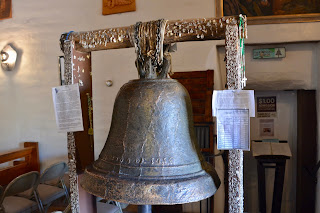





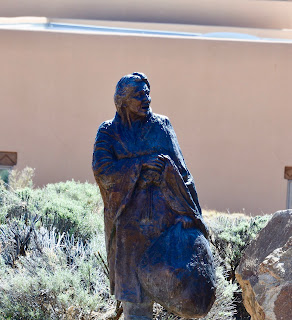
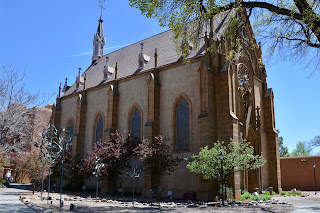
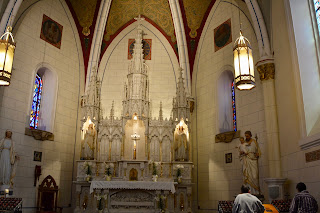



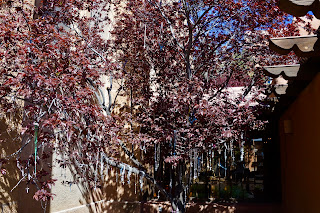

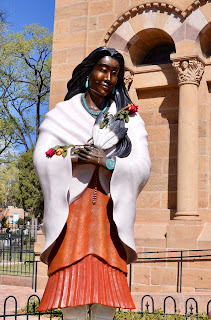
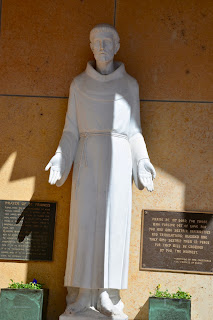




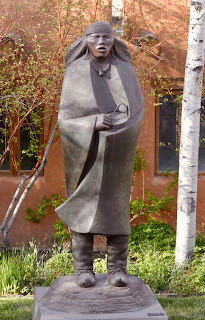

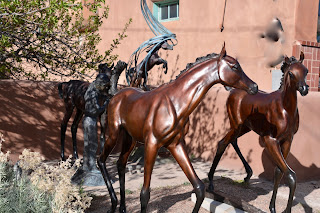

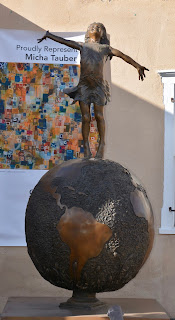
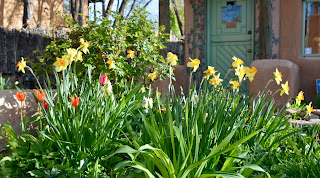


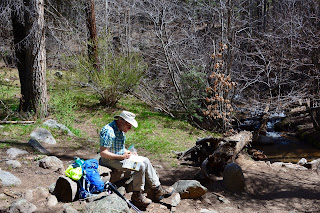
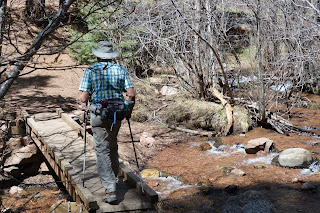
No comments:
Post a Comment